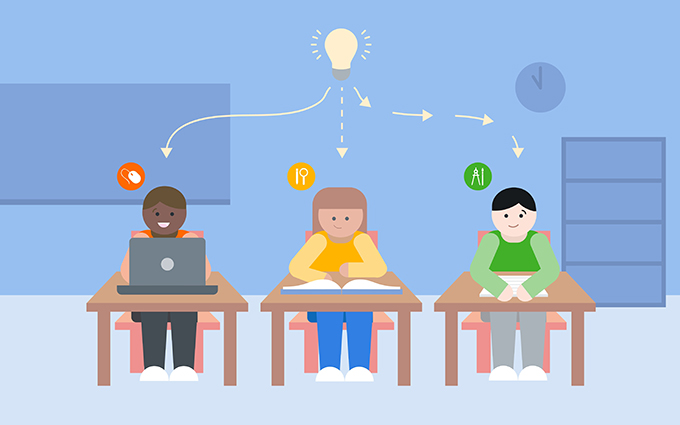Each student deserves a learning plan that works great for them. Picture a classroom without a ‘one size fits all’ mode of instruction. Here, the teacher will have to designate an individualised journey for every student.
Personalised learning is an approach that offers customised learning for every student. It analyses and creates the best strategy which suits the student’s strengths, skills, needs and interests. Private schools in Chennai like Babaji Vidhyashram School, offer personalised learning for every student, ensuring that they develop the expected skills along with education.
Models of Personalized Learning
Although it varies from one school to another, there are four common models that schools normally follow. These align the learning to standards and set high expectations for students.
Using Learner Profiles
An up-to-date record of the student’s motivation, progress, strength, goal, and need helps gain a deep understanding of the student. The profiles are frequently updated to help teachers make effective decisions and make students learn better. Learner profiles are important for students to track their own progress. It is of great value to teachers, parents, and students to make a change in the learning method. Learning profiles prevent a student from failing with a proper insight into his/her own needs and requirements.
Setting Up Personalised Learning Paths
Students customise a learning path based on their motivation, goal and progress. The school will create a weekly schedule based on student’s academic interests and progress. In a personalised learning path, teachers will monitor and offer extra support to the students depending on their needs. Each student schedule includes several learning techniques and is unique from the other. These learning techniques are modalities which include:
- Project-based learning with peers
- Independent work on complex tasks
- One-on-one tutoring with teacher
Assessing Competency-based Progression
Assessing students and monitoring their progress, schools understand what skills the students need to master. The competencies may be knowledge, mindsets or specific skills. Though students can work on several competencies, they move from one to another after mastering one completely. Teachers provide great support to help them master the skills with continuous learning. The emphasis here is to make students show their talents and knowledge consistently.
Creating Flexible Learning Environment
The school creates the best learning environment for students. They analyse the needs and requirements of the students and make changes to the physical setup, faculty and day schedule or routine. Schools reshape the learning environment with space, time and resources and make students perform better. A flexible learning environment is the most commonly used personalised learning strategy in most schools.
Benefits of Personalized Learning
Many schools are still exploring personalised learning. It can meet the needs of students with differences in learning and thinking. It reduces the stigma of special education and focuses greatly on students’ strengths and interests. Along with individualised education programs, personalised learning helps students work on their weaknesses. Furthermore, they make students take responsibility for their learning.
Read Also: Killer Tips to Finish Your Law Dissertation within Deadline
It offers he students an opportunity to develop self-advocacy skills. It allows them to speak about their interests. It helps the students to absorb more knowledge and stay engaged. Increased engagement leads to increased motivation. With personalised learning, children will have the liberty to choose the learning path. Therefore, it provides better results and also avoids wasting time.
Personalised learning makes learning activities more meaningful as students connect well with their interests. It empowers students with personal care and attention. It is an authentic approach that develops great enthusiasm amongst the students. It creates an environment with better student-teacher and parent-teacher relationships. Although personalised learning has a lot of advantages, it equally has risks.
Risks of Personalized Learning
Teachers play the most significant role in making personalised learning possible. However, if they are not well-trained, schools will face certain dips in meeting the child’s needs. A few of the disadvantages of personalised training with regards to improper teacher training are that teachers may not
- Know how to work with executive functioning issues and support students.
- Have sufficient training to make personalised learning successful and accessible to students.
- Know how to analyse student data and track competencies.
End-note
Personalised learning may need more effort and time to develop. But it is slowly making its way into the education system and is becoming a part of student life. More than a fad and trend, students need it as a necessity. It may help achieve better results with several models, as stated above.
Most importantly, schools should train the teachers to provide better guidance and support for struggling students with personalised learning. If done well, all students will be more engaged in their learning. And struggling students will get help sooner. If not done well, students with disabilities could fall further behind.




